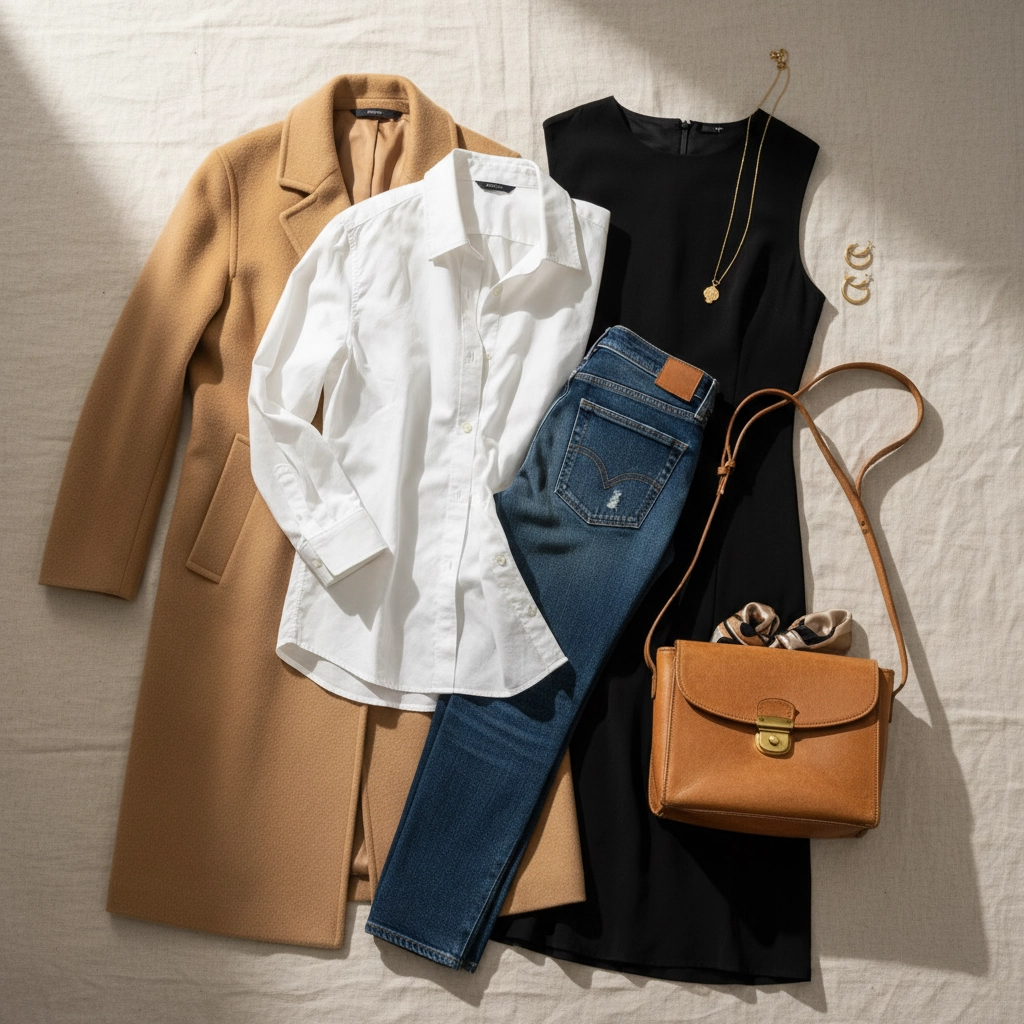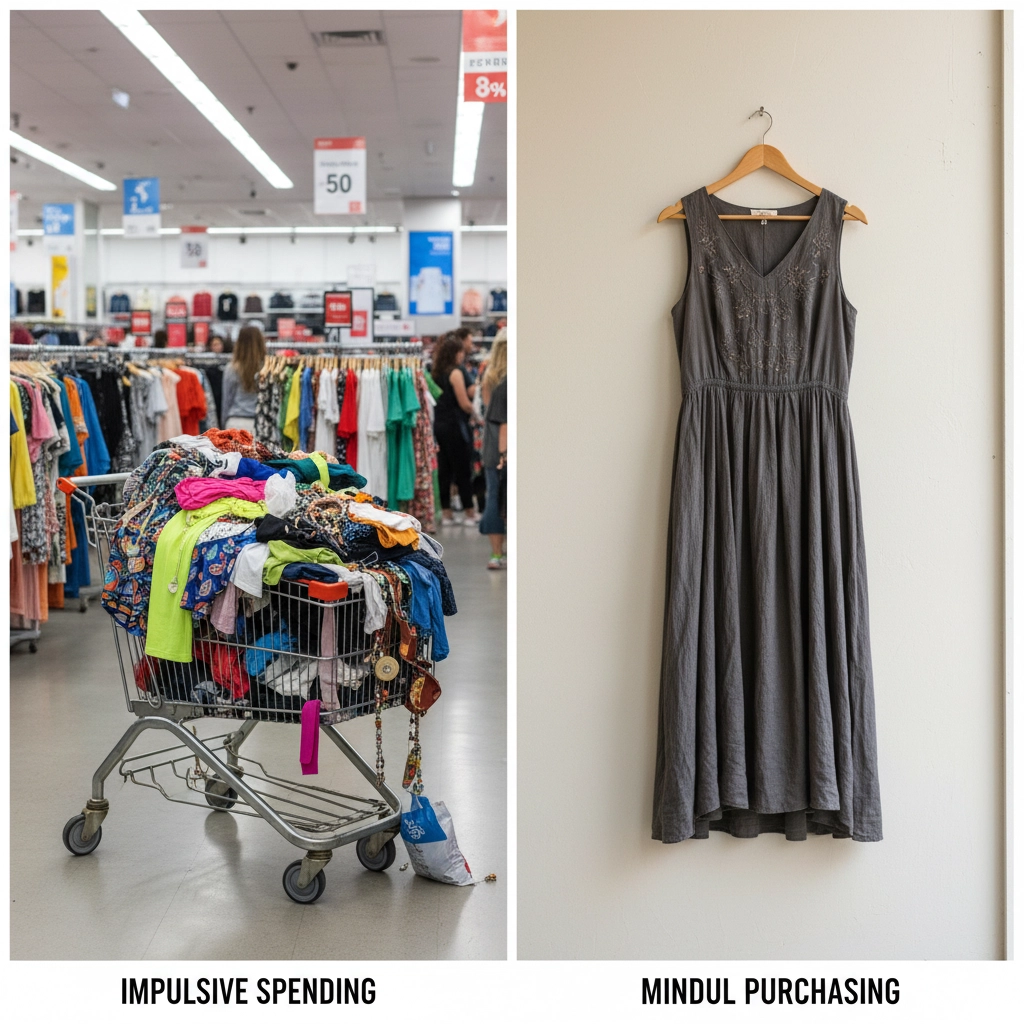Sustainable fashion doesn't have to mean emptying your wallet or sacrificing style. Yet many of us unknowingly sabotage our eco-friendly efforts while spending way more than necessary. Whether you're just starting your sustainable fashion journey or looking to refine your approach, avoiding these common pitfalls will help you build a wardrobe that's both ethical and budget-friendly.
Mistake #1: Following Every Fast Fashion Trend
We've all been there – scrolling through social media, seeing the latest "must-have" piece, and feeling that instant urge to buy. The problem? Trend-driven shopping is the antithesis of sustainable fashion. When you constantly chase what's hot right now, you end up with a closet full of pieces that feel outdated within months.
The Budget-Friendly Fix:
Before buying into any trend, ask yourself: "Will I still love this in a year?" Only invest in trends that genuinely align with your personal style and lifestyle. Instead of buying five trendy pieces that you'll wear once each, choose one quality piece you'll reach for repeatedly. Remember, you need to wear a garment at least 30 times to make it truly sustainable.

Mistake #2: Planning a Complete Wardrobe Overhaul
The all-or-nothing mentality strikes again! Many people decide to go sustainable and immediately want to replace their entire wardrobe with ethically-made pieces. While the enthusiasm is admirable, this approach is expensive and ironically wasteful – you're essentially discarding perfectly wearable clothes.
The Budget-Friendly Fix:
The most sustainable thing you can do is wear what you already own. Fall back in love with pieces you've forgotten about by styling them in new ways. Only replace items as they genuinely wear out or when you have a real gap in your wardrobe. This gradual approach is gentler on both your wallet and the environment.
Mistake #3: Impulse Buying "Because It's Sustainable"
Just because something is made ethically doesn't mean you need it. Many shoppers justify impulse purchases by focusing on a brand's sustainability credentials while ignoring whether they actually need or will use the item. Studies show that 38% of Americans admit to buying clothes they never even wore – sustainable or not, this is wasteful.
The Budget-Friendly Fix:
Implement a 48-hour waiting period for any non-essential purchase. Ask yourself: "Do I have something similar already? Will this work with at least three other pieces in my closet? Can I see myself wearing this 30+ times?" If you can't confidently answer yes to all three, skip it.

Mistake #4: Ignoring the Care Instructions
You finally invest in that beautiful organic cotton dress or bamboo top, then accidentally shrink it in hot water or fade it by washing it with dark colors. Poor garment care is one of the fastest ways to shorten your clothes' lifespan, forcing you to replace them sooner than necessary.
The Budget-Friendly Fix:
Read and follow care labels religiously. Invest in a few basic tools like mesh laundry bags, wool dryer balls, and gentle detergent. Learn simple maintenance skills like removing stains quickly, storing clothes properly, and doing basic repairs. These small efforts can double or triple your garments' lifespan.
Mistake #5: Focusing Only on Materials, Not Construction
Many sustainable fashion newcomers get caught up in buzzwords like "organic" and "recycled" while overlooking construction quality. A poorly-made organic cotton t-shirt that falls apart after a few washes isn't more sustainable than a well-constructed conventional cotton shirt that lasts for years.
The Budget-Friendly Fix:
Learn to assess quality construction. Look for reinforced seams, quality zippers, proper button attachment, and finished edges. Check if hems are straight and if patterns match at seams. Sometimes paying a bit more upfront for better construction saves money in the long run. When shopping at Casual Chic Boutique, look for pieces like our bamboo twist front top that combines sustainable materials with quality construction.

Mistake #6: Buying Multiples "For Later"
Found an amazing sustainable brand having a sale? Many people stock up by buying the same item in multiple colors or sizes, thinking they're being smart shoppers. But this defeats the purpose of mindful consumption and ties up money in clothes you're not actively wearing.
The Budget-Friendly Fix:
Resist the urge to buy multiples, even on sale. Focus on one quality piece at a time, wear it regularly, and then consider adding to your collection if needed. If you absolutely love something, favorite it or add it to your wishlist for future consideration rather than purchasing immediately.
Mistake #7: Not Having a Clear Style Vision
Without a clear sense of your personal style, you'll end up with a disjointed collection of "sustainable" pieces that don't work together. This leads to the frustrating feeling of having "nothing to wear" despite a full closet, often resulting in more purchases to fill perceived gaps.
The Budget-Friendly Fix:
Before shopping, define your personal style and lifestyle needs. Create a mood board or Pinterest board of looks you love. Identify your color palette and preferred silhouettes. When you shop with intention, every piece works harder in your wardrobe. Consider building around versatile pieces like our knit tube dress with scarf that can be styled multiple ways.

Building Your Sustainable Wardrobe the Smart Way
The key to sustainable fashion success lies in changing your relationship with clothes from consumption to curation. Instead of asking "What's new?" ask "What do I need?" Instead of buying for who you want to be, buy for who you actually are.
Start by shopping your own closet. You might rediscover forgotten gems or find new ways to style existing pieces. When you do need to make a purchase, choose brands that align with your values and offer quality construction. Look for versatile pieces that can be mixed and matched extensively.
Consider alternative shopping methods too. Clothing swaps with friends, consignment stores, and rental services can satisfy your desire for something new without the environmental impact of producing new garments.

Remember, sustainable fashion is a journey, not a destination. Every small step counts, and perfection isn't the goal – progress is. By avoiding these common mistakes, you'll build a wardrobe that reflects your values, suits your lifestyle, and respects your budget.
The most sustainable garment is the one you already own, but when you do need something new, choose wisely. Your future self – and the planet – will thank you for taking a thoughtful, budget-conscious approach to sustainable fashion.


